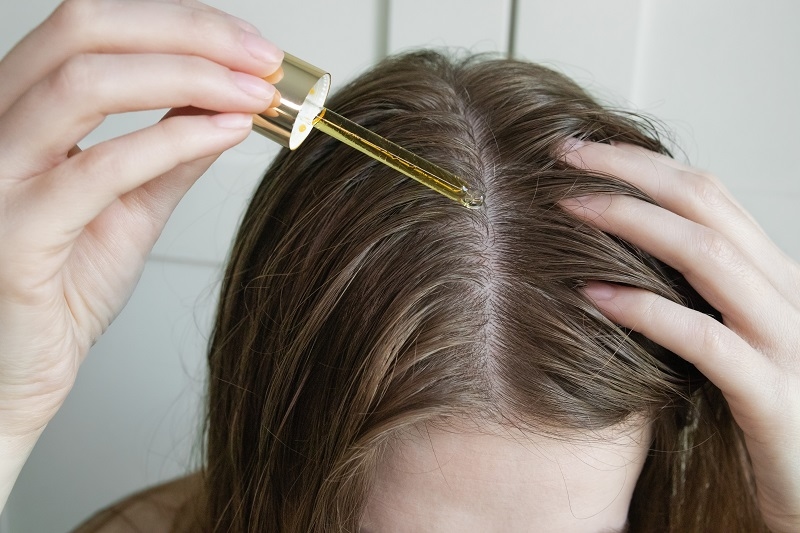
Low porosity hair can be a double-edged sword. This hair type is less susceptible to frizz and damage. However, it is often hard for it to take in moisture. The key to keeping it from breaking down is to understand what your hair needs and create a proper care routine.
This tutorial will show you a simple, effective low porosity hair care routine to help you keep moisture in your hair and have strong, shiny hair.
The first thing to figure out before getting into a daily hair routine is what low porosity hair really means. Hair porosity is the measure of the hair's ability to absorb and hold moisture. With low porosity hair, the hair’s cuticles are so tightly closed that they resist water and products. Therefore, you will have a lower chance of the hair getting damaged and breaking, but penetration of the moisture into the hair shaft is the problem.
There are some traits that are common in low porosity hair. For example, hair is very hard to get wet, the products seem to be sitting on the hair as they don't combine well, the hair might feel stiff and dry, but still very shiny and frizz-resistant, and can be very well conditioned. The first step to building a best-fit care environment for the hair is to know its porosity nature. A hair porosity guide will help you recognize your hair type and grasp the best techniques and products for maximum hydration.
Low porosity hair can be determined by simple porosity test methods that can be done at home.
Your hair type can only be determined after you have done all the tests.
You can then select the right products and techniques to make sure that your hair is well moisturized.
A different approach is necessary for low porosity hair compared to other hair types. The overall aim is to be able to retain as much moisture as possible without your hair losing its volume. Using water-based light products, avoiding heavy oils and butters, applying the heat during the conditioning process, which will allow the closed cuticles to open, and only protein-free treatments are the main points one should keep in mind. These principles, when observed, make the hair soft, manageable, and well-moisturized.
It is important to take into consideration what low porosity products will be best for you. Go for the products that have ingredients that will penetrate your hair with ease and will not cause buildup. Some of them are:
Stay away from heavy butters like shea or mango butter for everyday use as they can not only make your hair look oily but also hinder water from getting into your hair.

A comprehensive low porosity hair care routine should include washing, conditioning, moisturizing, and protective styling. Below is the step-by-step guide:
Use a pre-poo treatment to condition your hair to water. Spread a little oil or conditioner on your hair and leave it for 20-30 minutes. This process opens the cuticles and reduces the chance of moisture escaping during shampooing.
Then clean hair with a gentle mild sulfate-free shampoo aimed at removing dirt and product buildup; a focus on the scalp area will let the rinsing be done down the shaft; If a harsh shampoo is used, your hair will be stripped of its natural oils.
Deep conditioning is an absolute necessity for those with hair that tends to lose moisture:
Protective styling, such as braids, twists, or updos, can offer protection from environmental stressors as well as prevent water loss. Make sure the style is loose enough not to cause breakage.
While the right products are essential, moisture retention hair can still be quite challenging. The following are a few essential tips for hair texture care:
The smallest of changes can significantly impact the experience of soft and hydrated hair.
Those with low porosity hair make a lot of mistakes without knowing, and the mistakes are the cause of poor hair hydration. The use of heavy butters on the hair daily can cause them to form a layer on top that prevents moisture from entering. Not doing deep conditioning will make hair dry and hard. If you rinse with cold water, the cuticles will close, and much of the product will not be absorbed.
If hair is given so much protein, it will become stiff and will easily break. By avoiding these errors, your hair will always be healthy and manageable.
Hair health is definitely not only about the products. Proper nutrition, sufficient hydration, and good overall wellness contribute greatly to hair's ability to retain moisture. Take plenty of water, maintain a balanced diet with plenty of vitamins, and avoid extreme heat and sun exposure. These factors in life affirm your low porosity hair care routine and enhance your hair's texture and strength.
The behavior of low porosity hair can vary from one season to another. Your hair might get the moisture it needs without much difficulty in a humid place, while you will have to give it water more often if you are in a dry area.
You can make an adjustment of your routine by deep conditioning more in the cold season, using light products in the hot months so that accumulation is not a problem and taking the advantage of protective styling to give your hair a break from the weather. Seasonal adaptations keep your hair soft and moisturized all year round.
Developing the perfect regimen for low porosity hair is as simple as knowing what the hair needs, choosing the right products, and sticking to the right routine. Each step is important, from a gentle cleanse to a deep condition, to sealing your roots with light oils, to protective styling. Porosity test procedures, along with a hair porosity guide, will help you understand what is good for your hair.
Low porosity hair will be soft, lively, and fully hydrated each day if well handled.
This content was created by AI